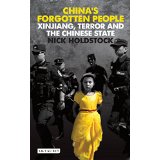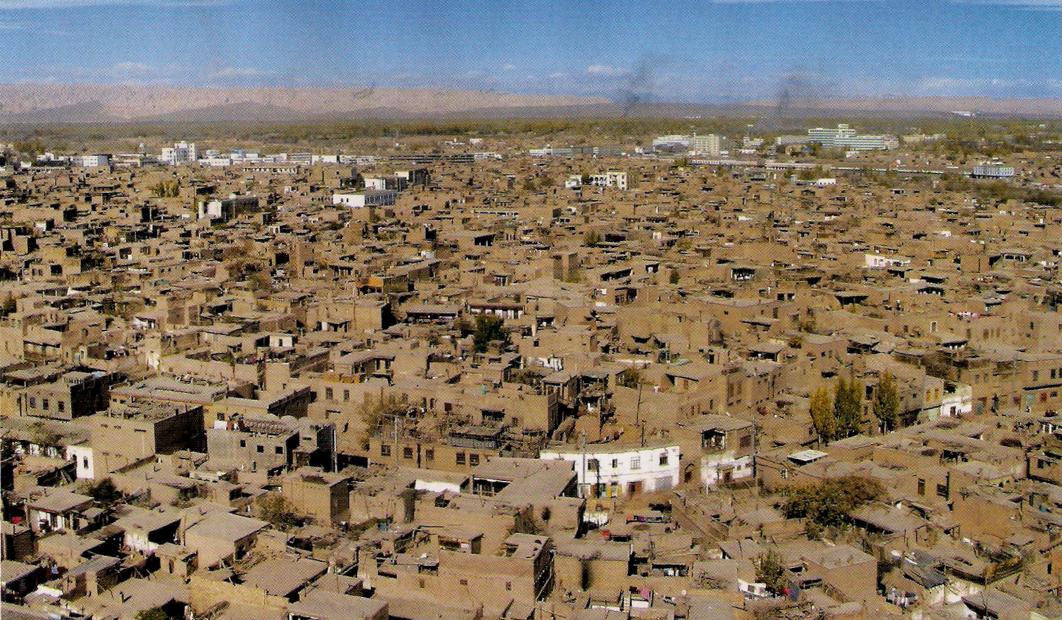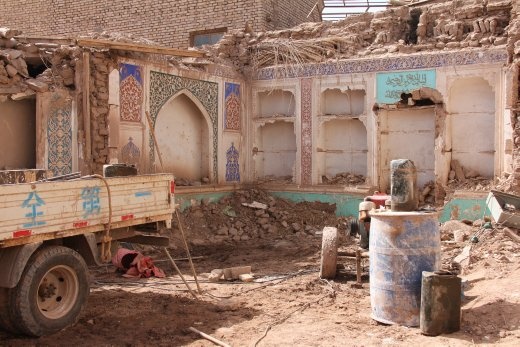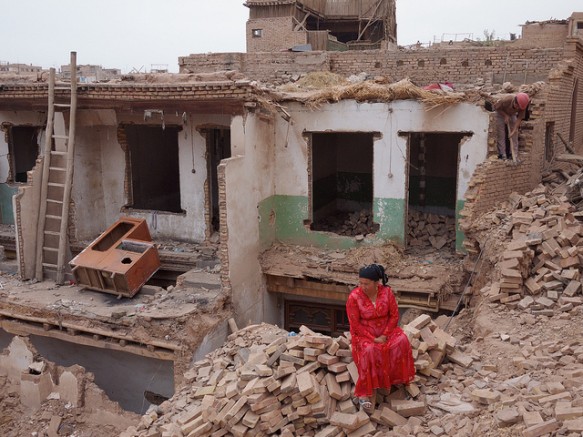The Last Days of Old Kashgar
Posted: January 18th, 2016 | 3 Comments »I don’t really review books on contemporary China on this blog but I will mention Nick Holdstock’s China’s Forgotten People: Xinjiang, Terror and the Chinese State – primarily because (apart from being a good and insightful study of the Chinese colonial experience in Xinjiang and the simmering resentments and resistance by the Uyghur people of the East Turkestan region) it does mention the horrific and wanton destruction of Kashgar.
The recent, almost total destruction of old Kashgar (3,000 years old and mentioned by Marco Polo) was preceded by decades of slow destruction. At first, after “liberation”, by the destruction (as in some cities across China from Kashgar to Zhangjiakou (Kalgan)) of the ancient city wall. Still, apart from a hideous statue of Mao not so much changed until the twentieth century. Watch The Kite Runner movie and that’s Kashgar standing in for Afghanistan. The destruction of the old town was couched in terms of modernisation and protection against earthquakes (which there haven’t been) but was, as Holdstock indicates, really about punishing Uyghurs for resistance and the reinforcement of Kashgar and all Xinjiang as a mono-cultural state, i.e. Chinese with all vestiges of Uyhgur culture eradicated. One interesting fact about the demolitions of the old town I did not know was that the Communist Party erected billboards indicating that UNESCO approved of the destruction.
Kashgar – before the bulldozers really got to work
And, of course, old Kashgar was doomed because nobody, at least nobody connected to the CCP, was profiting from it. Of course with all land in China, including its occupied regions such as Xinjiang, owned by the state (Communist Party) then pulling down to rebuild is profitable for the state in an immediate way preservation, heritage restoration and improvement of existing traditional architecture is not. So old Kashgar got bulldozed – Uyghur culture was diluted, Chinese state control of the region (arguably) strengthened and the Party made a profit. Of course, as Holdstock points out, being “Han” Chinese (used in the sense of the ethnically catchall term it is by most Chinese, Han or otherwise) doesn’t help much as hutong and lilong dwellers in Beijing and Shanghai respectively know only too well.




Interesting to read your short review here, Paul. I haven’t read this book yet, although I did read Holdstock’s first book on Xinjiang.
My biggest issue with his writing is his limited experience in Xinjiang. I feel that it contributes a lot to the general misunderstanding about what’s happening here.
I could go into a lot of detail, but the main thing I wanted to say is that the new Kashgar “Old City” isn’t that bad. What I’ve realized since being there a number of times is that although it is nothing close to a historical representation of the original Old City, it still has a great atmosphere. I think the reason for this is that it is still alive with Uyghur people – shop keepers, shoppers, residents. THAT is what makes Kashgar special.
I’m not condoning the destruction of the Old City by the Chinese government, but I just roll my eyes every time a foreign journalist moans about it. You want to see the Old City? It still exists, although it’s a small section. Do you really want to see Uyghur culture? For heaven’s sake…get out of the city and into the villages.
Destroying Kashgar’s Old City did not destroy Uyghur culture, no matter how much Nick Holdstock may think so.
You can do anything with a little money, including publishing a book. That doesn’t mean the content of the book is necessarily accurate. I suspect many more authors/writers publish books on cultures and the environments of, than actually spend time in the environment and interaction with the people.
sorry, not quite sure what your point is regarding Holdstock’s book?